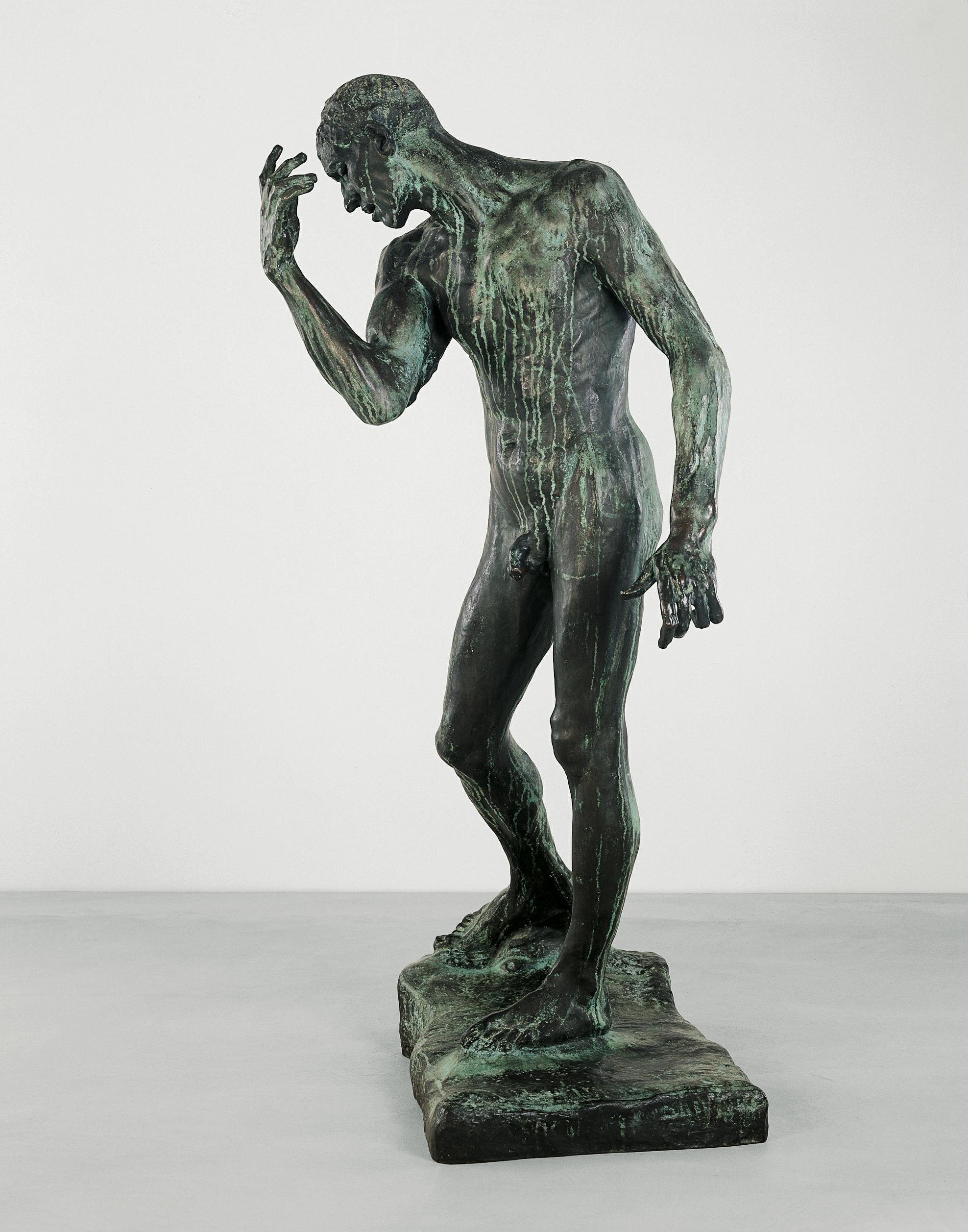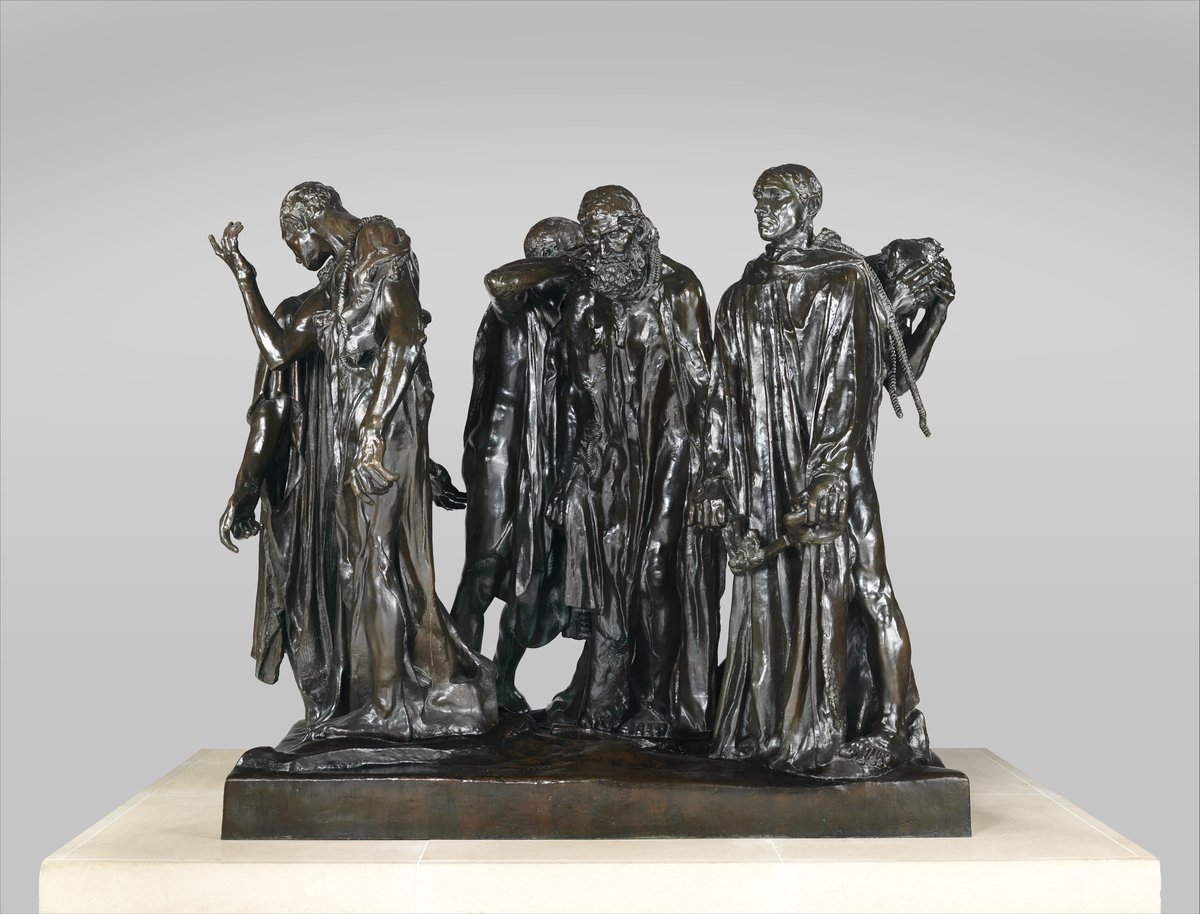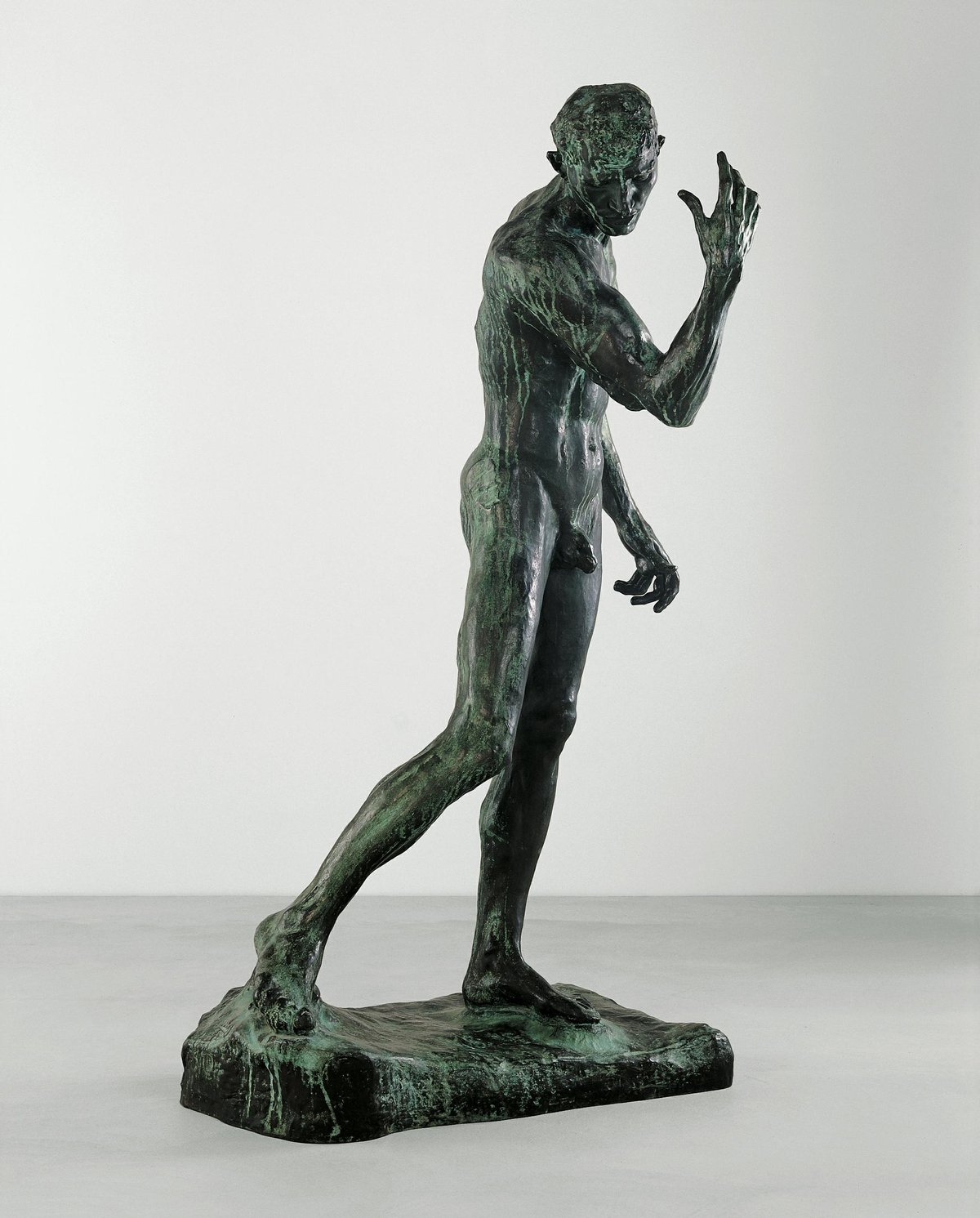Auguste Rodin
Pierre de Wissant (nude), ca. 1885–1887

Auguste Rodin
Pierre de Wissant (nude), um 1885–1887
Kunst Museum Winterthur, Ankauf mit Jubiläumsspenden der Schweizerischen Bankgesellschaft, der Aktiengesellschaft Johann Jakob Rieter & Cie, der Gebrüder Sulzer Aktiengesellschaft und der Schweizerischen Unfallversicherungsgesellschaft, 1948
Foto: SIK-ISEA, Zürich (Lutz Hartmann)
In around 1900 the sculpture underwent profound changes; both material and space were treated in a new way. One of the great innovators in this was Auguste Rodin. The figure of Pierre de Wissant was not created as an independent figure. It is one of six figures from the Citizens of Calais. This multi-piece sculpture is based on an episode from the Hundred Years War between England and France in which six citizens sacrificed their lives to save their city. Rodin sought a new form of monumentality for the subject, which directly confronted the onlooker with the antagonists.

Auguste Rodin und Alexis Rudier
The Burghers of Calais, 1884–1895
Metropolitan Museum of Art, New York
In preparation Rodin studied each single figure and created individual models of them. Some were created as nudes. These differ from the clothed citizens in that they are not studies, but independent works.
Rodin rarely chose historical events as his subject, but with Pierre de Wissant it was the body that interested him more than anything, or more to the point the different parts of the body. They give the impression of being epic, monumental, with no part being subordinate, but each assuming its own independent existence. Rodin constructed the figure from the separate parts, creating a significant difference to Maillol’s La nuit, in which the limbs are subordinate to the cubic form.
The twisting of the right arm lends the figure a dance-like quality. Veins, tendons, muscles and joints protrude clearly from under the skin, and the marks of the sculptor’s work can be read on the body. The feet are placed at an angle, so the figure isn’t directly facing us. We have to move around the figure to fully appreciate it. Thus, there is no main view, but a variation of changing possibilities and ways of looking at it.

Auguste Rodin
Pierre de Wissant (nude), um 1885–1887
Kunst Museum Winterthur, Ankauf mit Jubiläumsspenden der Schweizerischen Bankgesellschaft, der Aktiengesellschaft Johann Jakob Rieter & Cie, der Gebrüder Sulzer Aktiengesellschaft und der Schweizerischen Unfallversicherungsgesellschaft, 1948
Foto: SIK-ISEA, Zürich (Lutz Hartmann)


